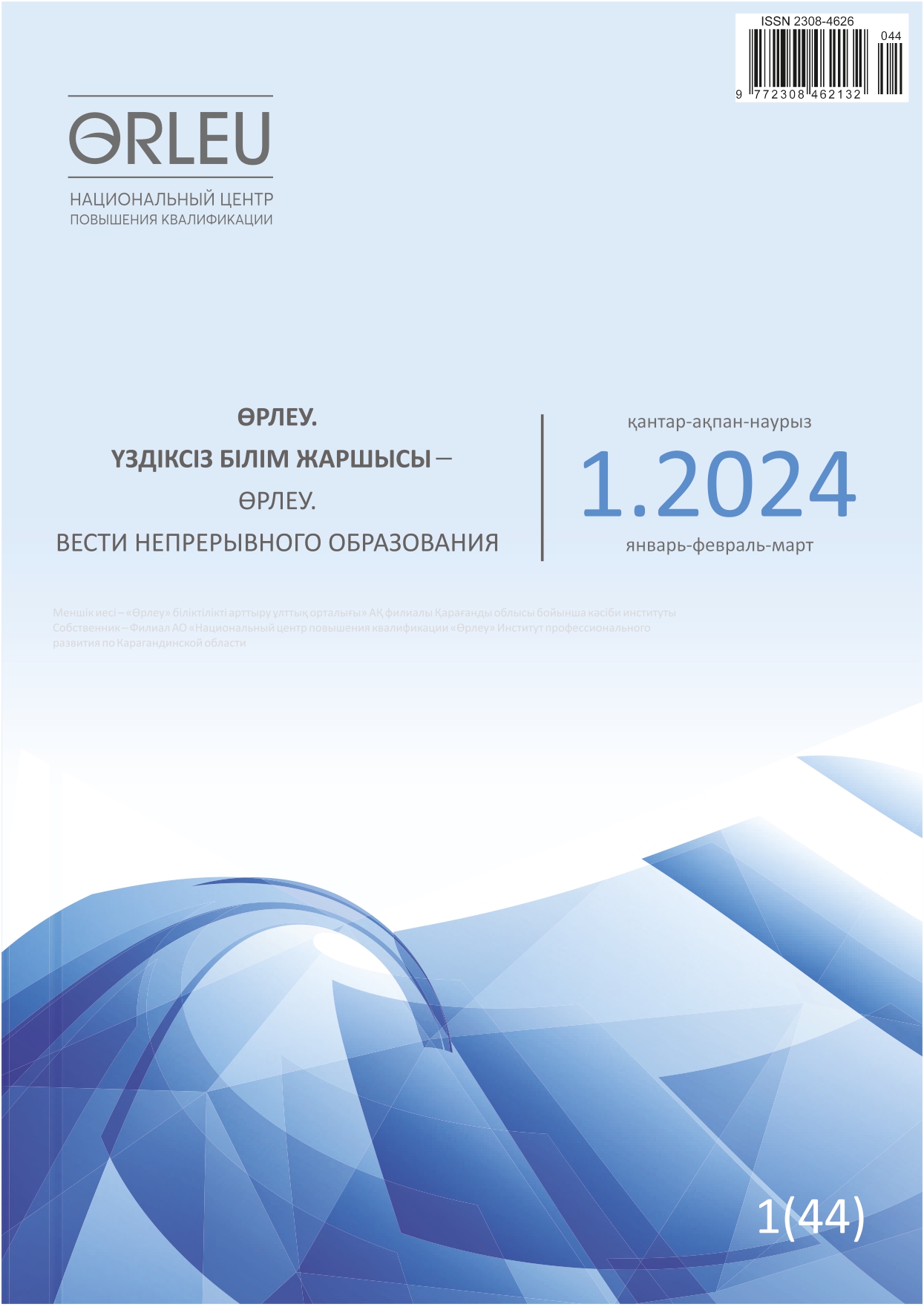Abstract
The article discusses the effectiveness of the Lesson Study (LS) approach for the formation of functional literacy of students through improving the teaching practice of teachers who implement programs or elements of CLIL-learning in high schools in Karaganda region.
The LS approach, which has successfully proved itself both in the national pedagogical community and abroad, is one of the most widespread practices of professional development of school teachers through "research into action". Lesson Study involves groups of teachers jointly planning, teaching, observing, analyzing learning and teaching, and documenting their findings.
The study included a questionnaire survey of CLIL teachers and high school students, diagnostics of learning outcomes on two measurable indicators: science literacy, reading literacy in a foreign (English) language, and assessment of the developmental potential of the LS approach for improving CLIL teachers' teaching practices. As a result of this work, the following empirical data were collected: minutes of teachers' creative group meetings on lesson planning, observation cards of A, B, C students, data of input/output questionnaires of high school students (n=84) and reflexive analysis of CLIL teachers' teaching activities (n=48) by SWOT method. The materials for analysis were collected on the basis of 13 schools of Karaganda city, implementing programs or elements of CLIL teaching.
The analysis of empirical data indicates the presence of fundamental methodological similarity, confirming the compatibility of the two approaches and their positive impact on the formation of functional literacy of high school students through the improvement of CLIL-teachers' professional practices. The results of students' self-assessment correlate with the results of output diagnostics conducted by teachers.

